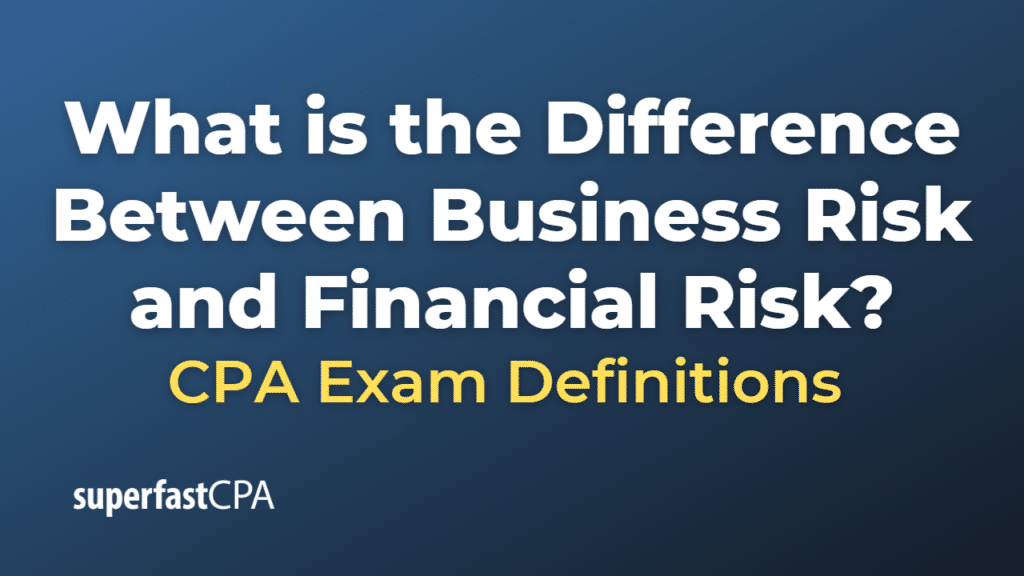Difference Between Business Risk and Financial Risk
Business risk and financial risk are two types of risk that a company might face. They each reflect different potential threats to the company’s profitability or survival:
- Business Risk: This refers to the risk associated with the company’s operations and its ability to remain profitable. It’s the risk that a company might not be able to cover its operating costs. Business risks can be internal (such as production delays, labor problems, equipment failures, or poor product quality) or external (like changing market conditions, competition, consumer preferences, or regulatory changes). These risks can impact the company’s revenues, expenses, and overall profitability.
- Financial Risk: This refers to the risk associated with the way a company finances its operations, specifically its use of debt. Financial risk increases as a company takes on more debt because it must meet the contractual obligations of its debt, such as interest and principal repayments, regardless of its financial performance. If a company can’t meet these obligations, it risks defaulting on its debt, which could lead to bankruptcy. Financial risk is primarily concerned with the potential for financial loss due to the use of debt financing.
In summary, while business risk relates to the operational aspects of a company that could impact its profitability, financial risk pertains to the potential for financial losses due to the use of debt. Both types of risk are important considerations for both company management and investors.
Example of the Difference Between Business Risk and Financial Risk
Let’s use an example of a hypothetical company, “FoodFusion Restaurant Inc.” to illustrate business risk and financial risk.
Business Risk:
FoodFusion is subject to several business risks. For instance, they operate in a highly competitive industry (food services) which is susceptible to changes in consumer preferences. If a new diet trend becomes popular and FoodFusion’s menu doesn’t align with this trend, they could lose customers and see a decrease in revenues.
Also, changes in food and labor costs represent a significant business risk. If food prices rise or if wage rates increase, FoodFusion’s costs could go up, which could squeeze their profit margins if they can’t pass on these costs to their customers through higher prices.
Financial Risk:
Let’s say FoodFusion took on a large amount of debt to finance the opening of new restaurant locations. This creates financial risk. Even if their restaurants face a decline in customer visits (perhaps due to a recession or the business risks described above), they still need to make their debt payments.
If their earnings decline significantly and they can’t make their interest and principal payments, they could default on their debt, which could ultimately lead to bankruptcy. This is the financial risk associated with their use of debt financing.
In this example, FoodFusion’s business risk is associated with its operational aspects (such as competition, consumer preferences, and cost of food and labor), while its financial risk is related to its use of debt financing and the required debt payments.













